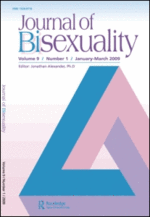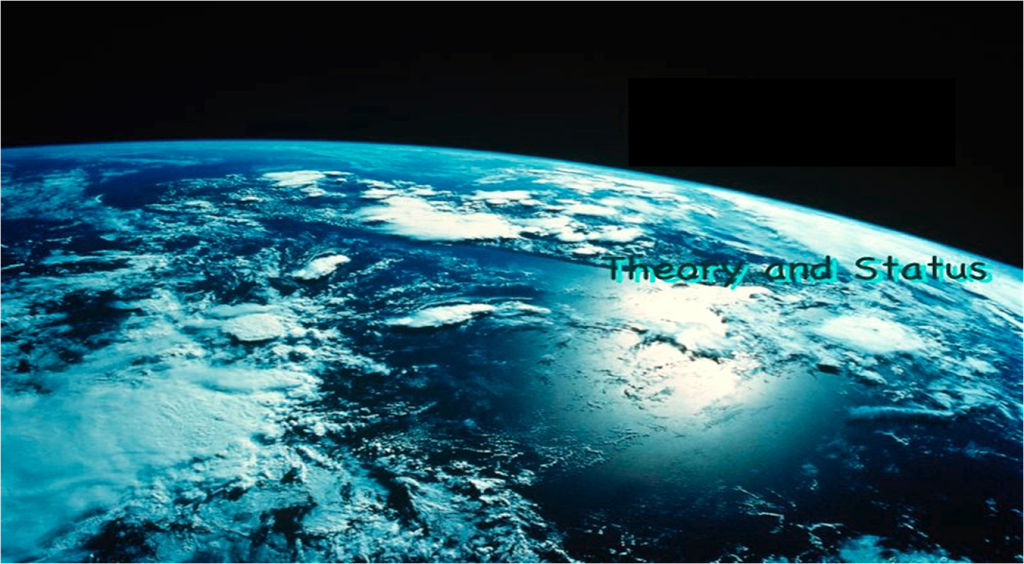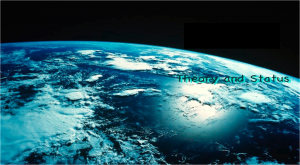Jonathan Alexander and Serena Anderlini-D’Onofrio
Has appeared also in Bisexuality and Queer Theory, a special-topics issue of The Journal of Bisexuality, co-edited by Serena Anderlini and Jonathan Alexander. Pre-published with permission of Routledge, New York.
Steven Angelides, A History of Bisexuality. University of Chicago Press, 2001. 281 pages (with index)
Clare Hemmings, Bisexual Spaces: A Geography of Sexuality and Gender. Routledge, 2002. 244 pages (with index)
Jennifer Baumgardner, Look Both Ways: Bisexual Politics. Farrar, Straus and Giroux, 2007. 244 pages (with index)
Jenny Block, Open: Love, Sex and Life in an Open Marriage. Seattle: Seal Press, 2009. 276 pages (with works consulted list)2
Beth Firestein, ed, Becoming Visible: Counseling Bisexuals Across the Lifespan. Columbia University Press, 2007. 441 pages (with index)
For this special issue of the Journal of Bisexuality on the intersections among queer theory and bisexuality, we thought it would be useful to review books that have substantively engaged this intersection in critical, insightful, and provocative ways. Two such books, Steven Angelides’ A History of Bisexuality (2001) and Clare Hemmings’ Bisexual Spaces: A Geography of Sexuality and Gender (2002), are somewhat “older” texts that have not yet been reviewed in the pages of this journal. To correct that omission, and in recognition of the importance that these two studies play in so many of the articles in this special issue, we offer our review and thoughts here. To set the critical theory of these books in a more contemporary and applied context, we link them to three more recent text. Two, Jennifer Baumgardner’s trade book, Look Both Ways: Bisexual Politics (2007), and Jenny Block’s Open: Love, Sex and Life in an Open Marriage (2009) memorialize various levels of personal experience as avenues to theorizing bisexuality for the lay public, and observing the ways in which this trope deploys itself in one’s personal life and in the life and culture of our era. Finally, Beth Firestein’s edited volume Becoming Visible (2007) offers a store of applied research as well as theoretical knowledge directed to professional counselors and therapists who intend to provide bisexual patients with the mental and psychological health care they need. The volume’s subtitle, Counseling Bisexuals Across the Lifespan, is emblematic of the volume’s intent to dispel the myth that “bisexuality is a phase” one can overcome with “proper” medical attention. The idea here is that there are no reasons to “overcome” bisexuality, while there are many reasons why counselors and therapists, as well as society as a whole, should think of bisexuals as very healthy, wholesome, and valuable members of the human community. An overview of these five books, we believe, will help readers of this collection get a fairly articulate sense of where bisexuality stands at this time in the realms of human knowledge and experience touched by these books.
To start, then, Steven Angelides’ A History of Bisexuality offers a much-needed historical and theoretical intervention in both our thinking about the history of what the modern era knows as sexuality, and our theorizing about the development of sexual identity categories. Co-editor Serena Anderlini-D’Onofrio, who was raised in Italy, brings to our reading of this book the perspective of a Mediterranean education, where awareness of bisexual behavior registers across the cultural spectrum since antiquity. This awareness has been articulated in a study of bisexual behavior in ancient Greece and Rome by Eva Cantarella, a professor of classical history at the University of Milan. The book’s title, Secondo natura, encodes the concept that there is nothing unnatural about erotic expression across genders: the title translates, quite literally, as according to nature, and even better, asgoing along with nature, or seconding nature, as one seconds a proposal in a meeting. The English elides the poetic aspect of this and reads, objectively, as Bisexuality in the Ancient World (1992). As might be expected of a scholar based in Australia, where the legacies of Western culture have arrived only recently, Angelides’ book focuses on the past 150 years. Oddly enough, however, Angelides’ perspective on the recent history of bisexuality helps to explain why the title of Cantarella’s book did not make it into English. Nature came to be studied scientifically in modernity, under the aegis of Christian monotheism. At this time, bisexual behavior came to be it constructed as against nature,because nature itself was now seen as the creation of a single deity. In the ancient world the divine was ubiquitous, it was in the body of nature and not separate from it. Bisexual behavior was just as natural as could be. Indeed, as Foucault would put it, the focus was on acts, not identities, and only after the onset of Christianity, with its separation between good and evil, certain acts came to be seen as sinful. In pre-Christian Rome and Greece, Cantarella’s book exemplifies in great detail, amorous behavior was considered an art whose forms and styles of expression were infinite, and the scientific concept of sexuality did not exist. In the arts of loving, the young were being initiated by those with more experience. For obvious anatomical reasons, if the students were of one’s own gender, those practical lessons in erotic love would be much ere easier to deliver. With English being a major language of modern scientific production (if not the most important one), no wonder the original title of Cantarella’s study either makes no sense or sounds outright pedophilic; the kind of thing that gets one in trouble in today’s academe, where mind-centered learning processes prevail.
Angelides’ book helps one to see what has been lost in this scientific modernization, and what a postmodern perspective can recuperate for itself and humanity’s future, in the ways of bringing back a positive, sustainable notion of the primitive. Angelides uses deconstructive strategies and a Foucauldian approach to the history of sexuality to trace the development of the category of bisexuality, from psychoanalytical and sexological theories at the end of the 19th century, through post-war gay liberation, to queer politics at the end of the 20th century. With critical sophistication and a general command of his subject, Angelides rightly points out how seemingly central bisexuality was, conceptually, to early psychoanalytic and sexological theory. For instance, Freud’s theories of polymorphous perversity and naturally innate bisexuality serve as foundations for his theories of sexuality, even as they ultimately position bisexuality as the “immature” (e.g., “perverse”) state out of which sexual maturity (i.e., heterosexuality) must arise. Angelides adeptly shows how bisexuality is cast in this role both ontogenetically and phylogenetically, namely in relation to the genesis of each individual and that of the species. From this starting point, Angelides deftly demonstrates how a series of controlling binary oppositions—man and woman, but also, fairly quickly, heterosexual and homosexual—come to dominate theoretical, and cultural as well as political, constructions of sexuality and sexual identity.
In the process, bisexuality becomes, in Angelides’ accounting, a kind of “ghostly other” to sexuality itself—there in the shadowy background, but ultimately something that must be denied in the pursuit of more mature sexual expressions. In other words, the persistence of bisexuality in this ghostly role embodies cultural fears that “sexuality,” per se, may not exist; that it may be nothing but a cultural construct. Even with the rise of gay liberation in the 1960s and 1970s, when some gay liberationists advocated a “bisexual chic” or a sexual freedom that would return us to our original polymorphous-ness, bisexuality never seemed to gain traction, either as an identity or a community or even a politics.
Consider, for instance, Adrienne Rich’s famous “lesbian continuum,” which seemed to acknowledge, explicitly, like Kinsey’s famous scale, a continuum of sexual, erotic, and intimate interest, from the fully lesbian to the singularly straight. In the hands of gay and lesbian activists and thinkers, however, the two poles become the focus of attention—gay and straight. The minoritizing logics of identity politics figure “gayness” as another identity, like straightness, and the in-between status of bisexuality seems to question too much the non-threatening innateness upon which much of gay politicking came to depend. We’re born this way, after all, so please don’t discriminate. Bisexuality, by comparison, seemed too much the sexuality “of choice,” and particularly in the advent of AIDS, it came to be seen as the dangerous sexuality that vectored disease from promiscuous homosexuals to an otherwise pristine suburbia. So while bisexuality seemed to be the “centerpiece” of much gay liberationist thinking, it was a bisexuality in name only, a very theoretical bisexuality.
Angelides moves deftly from history into theoretical discussion, focusing on the work of sexuality studies scholars such as Michel Foucault, Judith Butler, and Eve Kosofsky Sedgwick—thinkers whose work dominated the study of sexuality in the 1990s. In particular, he uses the work of Judith Butler, particularly Bodies That Matter, to unpack the prevalence of binarisms that made bisexuality a difficult subject to consider, even at the headily questioning height of queer theory. Angelides pointedly asks, “Why is bisexuality the object of such consistent and intense skepticism? […] In short, why has bisexuality been rendered, for the most part incidental and even irrelevant to the history, theory, and politics of sexuality”? (190).
Following the lead of Foucault and Butler, particularly in their genealogical mode, Angelides ultimately situates his historical survey of bisexuality less as a discovery of the truth of bisexuality or the revelation of a hidden history (see Marjorie Garber’s Vice Versa for that story), but more as a theoretical questioning of why bisexuality is a conceptually troubling category. He writes, “[t]racking the epistemic path of bisexuality has been for me one way of bringing into clearer view the failure of our epistemology of sexuality; that is, the impossibility of any attempt to posit this thing called ‘sexuality,’ and its component identity-parts of hetero-, homo-, and bisexual” (196). For Angelides, undertaking such a theoretical venture has real-world consequences, in a number of ways. In many ways, attending to the theoretical difficulties that bisexuality poses to our conceptualization of sexuality mandates a complete theoretical reconsideration of sexuality; and indeed, Angelides calls at the end of his study for a substantive rethinking of how we understand the history of sexuality:
This deconstructive history has demonstrated that no analysis of sexuality can afford to ignore the category of bisexuality, which mandates a critical rethinking of some of the central terms and strategies of Foucauldian and queer theories. While these theories have provided, and continue to provide, cogent political and theoretical tools for antihomophobic and anti-heteronormative inquiry, it is important to attend to their own structuring exclusions in order to strengthen their political and theoretical promise (199).
Put another way, a queer theory that misses bisexuality’s querying of normative sexualities is a queer theory that is itself too mastered by the very normative and normalizing binaries it seeks to unsettle; as he succinctly puts it, “[a]s deconstructive readers and cultural critics we need continually to monitor the sites through which the reiteration of sexuality, and its accompanying hierarchy of hetero- and homosexuality, is taking place” (201).
More interestingly, and speculatively perhaps, Angelides stretches the implications of his critiques beyond the humanities into the social sciences and even the hard sciences. He suggests that “…science ought [not] to abandon questions relevant to those things assigned to the category of ‘sexuality,’ but…scientists ought to pursue a different set of questions altogether” (206). For example, the much vaunted search for the “gay gene,” which seems to dominate some scientific inquiry into homosexuality, seems misguided at best, if not seriously theoretically flawed as an investigative project. Angelides urges that we not let our scientific thinking be dominated by the same binarisms that have hampered psychological thinking. Rather, he argues, we should consider other, potentially more interesting questions about the multiple and plural natures of desire, attraction, and intimacy—questions that would not simply replicate the old, normalizing, and constraining hetero/homo divide, which doesn’t do justice to the complexity of sexuality anyway, either theoretically or experientially.
A History of Bisexuality is, in many ways, a stunning book, one which scholars and lay readers alike can learn from, appreciate, and ultimately enjoy. What partially hampers Angelides’ approach in positing such questions is his failure to account for some scientists and medical professionals, such as Dr. Fritz Klein, in doing exactly what he suggests they do. Indeed, Angelides’ elisions of Klein’s famous study and treatise, The Bisexual Option (originally published in 1978), seems grievous in this case, particularly since Dr. Klein’s Sexual Orientation Grid attempts to move questions about sex, sexuality, intimacy, and eroticism away from identity and towards a complex plurality of modalities. Nonetheless,A History of Bisexuality still dazzles with the scope of its historical sweep and its theoretical acumen.
Also published in SexGenderBody.
Reprinted here with thanks to Arvan Reese and Routledge, NY.
http://polyplanet.blogspot.com


